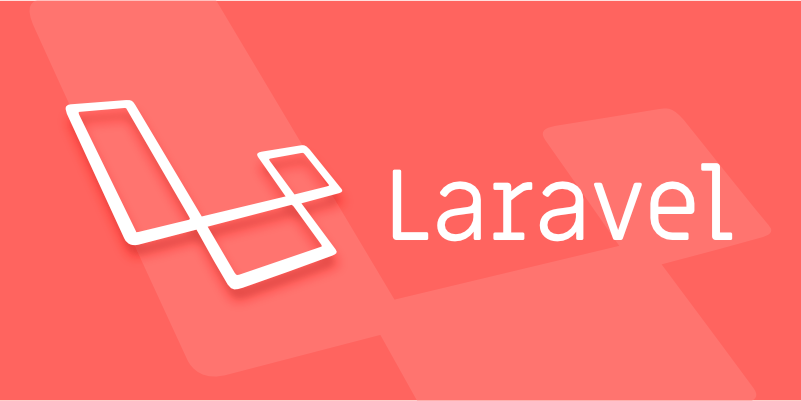Defining and using local and global scopes in Laravel Eloquent
Jul 11, 2025 am 03:20 AMIn Laravel Eloquent, the global scope is automatically applied to each query, suitable for scenarios such as filtering inactive users; the local scope needs to be called manually, suitable for scenarios such as displaying published articles only in a specific context. 1. Global scope is implemented by implementing the Scope interface and registering in the model, such as adding the where('active', true) condition. 2. Local scope is a method in the model, starting with scope and can take parameters, such as scopeVerified() or scopeOfType(). 3. When using global scope, its impact on all queries should be considered, and if necessary, you can exclude it by withoutGlobalScopes(). 4. When selecting a scope, decide based on whether the conditions are always needed, and pay attention to the readability and testability of the code. 5. A simple global scope can be defined through closures to improve development efficiency.

In Laravel Eloquent, understanding how to define and use local and global scopes is key to writing clean, reusable, and maintainable code. Scopes help you filter query results without repeating the same conditions across your application. Here's how to make the most of them.

What's the difference between local and global scopes?
Global scopes apply automatically every time you query a model — like always filtering out deleted users or only fetching active records.
Local scopes , on the other hand, are applied manually when needed — for example, only showing published posts in certain contexts.

Knowing when to use each helps keep your logic organized and prevents bugs from unintended data exposure.
How to define a global scope
To create a global scope , you need to implement the Illuminate\Database\Eloquent\Scope interface. This involves defining a class with an apply method that adds constraints to the query.

For example, let's say you want to exclude inactive users globally:
namespace App\Scopes;
use Illuminate\Database\Eloquent\Builder;
use Illuminate\Database\Eloquent\Model;
use Illuminate\Database\Eloquent\Scope;
class ActiveUserScope implements Scope
{
public function apply(Builder $builder, Model $model)
{
$builder->where('active', true);
}
}Then, in your model:
use App\Scopes\ActiveUserScope;
protected static function booted()
{
static::addGlobalScope(new ActiveUserScope);
} Now, every query on this model will include where active = true .
Note: You can bypass global scopes using methods like
withoutGlobalScopes()orwithoutGlobalScope(ActiveUserScope::class)if you ever need to fetch all records.
Creating and using local scopes
A local scope is simpler — it's just a method inside your model that starts with scope , followed by the name in camelCase.
For example, to define a scope that returns only verified users:
public function scopeVerified(Builder $query): Builder
{
return $query->whereNotNull('email_verified_at');
}Then call it like this:
User::verified()->get();
You can also add parameters:
public function scopeOfType(Builder $query, string $type): Builder
{
return $query->where('type', $type);
}And use it like:
User::ofType('admin')->get();
These scopes are great for reusing common filters without cluttering your controllers.
When to choose global vs local scopes
- Use global scopes when the condition should always be applied (like soft-deletes, tenant isolation, status checks).
- Use local scopes when the filter is context-dependent (eg, filtering by category, status, or custom user roles).
Also, consider readability and testability:
- Global scopes are powerful but can be harder to track down when debugging.
- Local scopes are more explicit and easier to understand at a glance.
Some tips:
- Document any global scopes so future developers know they exist.
- Don't overdo it with too many scopes — sometimes a simple where clause is clearer.
- Group related scopes into traits or base models if you find yourself copying them.
Bonus tip: Using anonymous global scopes
If your scope is simple, you can skip creating a separate class and use a closure directly in the model:
use Illuminate\Database\Eloquent\Builder;
use Illuminate\Support\Facades\Auth;
protected static function booted()
{
static::addGlobalScope('user_tenant', function (Builder $builder) {
$builder->where('user_id', Auth::id());
});
}This is handy for quick filters that don't need reuse across multiple models.
Basically, scopes are one of those tools in Laravel that, once understand, make your code cleaner and more expressive. Whether you're applying a global rule or adding a conditional filter, knowing which scope to use and how keeps things running smoothly.
No magic — just smart, reusable query logic.
The above is the detailed content of Defining and using local and global scopes in Laravel Eloquent. For more information, please follow other related articles on the PHP Chinese website!

Hot AI Tools

Undress AI Tool
Undress images for free

Undresser.AI Undress
AI-powered app for creating realistic nude photos

AI Clothes Remover
Online AI tool for removing clothes from photos.

Clothoff.io
AI clothes remover

Video Face Swap
Swap faces in any video effortlessly with our completely free AI face swap tool!

Hot Article

Hot Tools

Notepad++7.3.1
Easy-to-use and free code editor

SublimeText3 Chinese version
Chinese version, very easy to use

Zend Studio 13.0.1
Powerful PHP integrated development environment

Dreamweaver CS6
Visual web development tools

SublimeText3 Mac version
God-level code editing software (SublimeText3)
 How to set environment variables in PHP environment Description of adding PHP running environment variables
Jul 25, 2025 pm 08:33 PM
How to set environment variables in PHP environment Description of adding PHP running environment variables
Jul 25, 2025 pm 08:33 PM
There are three main ways to set environment variables in PHP: 1. Global configuration through php.ini; 2. Passed through a web server (such as SetEnv of Apache or fastcgi_param of Nginx); 3. Use putenv() function in PHP scripts. Among them, php.ini is suitable for global and infrequently changing configurations, web server configuration is suitable for scenarios that need to be isolated, and putenv() is suitable for temporary variables. Persistence policies include configuration files (such as php.ini or web server configuration), .env files are loaded with dotenv library, and dynamic injection of variables in CI/CD processes. Security management sensitive information should be avoided hard-coded, and it is recommended to use.en
 What is Configuration Caching in Laravel?
Jul 27, 2025 am 03:54 AM
What is Configuration Caching in Laravel?
Jul 27, 2025 am 03:54 AM
Laravel's configuration cache improves performance by merging all configuration files into a single cache file. Enabling configuration cache in a production environment can reduce I/O operations and file parsing on each request, thereby speeding up configuration loading; 1. It should be enabled when the application is deployed, the configuration is stable and no frequent changes are required; 2. After enabling, modify the configuration, you need to re-run phpartisanconfig:cache to take effect; 3. Avoid using dynamic logic or closures that depend on runtime conditions in the configuration file; 4. When troubleshooting problems, you should first clear the cache, check the .env variables and re-cache.
 How to develop AI intelligent form system with PHP PHP intelligent form design and analysis
Jul 25, 2025 pm 05:54 PM
How to develop AI intelligent form system with PHP PHP intelligent form design and analysis
Jul 25, 2025 pm 05:54 PM
When choosing a suitable PHP framework, you need to consider comprehensively according to project needs: Laravel is suitable for rapid development and provides EloquentORM and Blade template engines, which are convenient for database operation and dynamic form rendering; Symfony is more flexible and suitable for complex systems; CodeIgniter is lightweight and suitable for simple applications with high performance requirements. 2. To ensure the accuracy of AI models, we need to start with high-quality data training, reasonable selection of evaluation indicators (such as accuracy, recall, F1 value), regular performance evaluation and model tuning, and ensure code quality through unit testing and integration testing, while continuously monitoring the input data to prevent data drift. 3. Many measures are required to protect user privacy: encrypt and store sensitive data (such as AES
 How to make PHP container support automatic construction? Continuously integrated CI configuration method of PHP environment
Jul 25, 2025 pm 08:54 PM
How to make PHP container support automatic construction? Continuously integrated CI configuration method of PHP environment
Jul 25, 2025 pm 08:54 PM
To enable PHP containers to support automatic construction, the core lies in configuring the continuous integration (CI) process. 1. Use Dockerfile to define the PHP environment, including basic image, extension installation, dependency management and permission settings; 2. Configure CI/CD tools such as GitLabCI, and define the build, test and deployment stages through the .gitlab-ci.yml file to achieve automatic construction, testing and deployment; 3. Integrate test frameworks such as PHPUnit to ensure that tests are automatically run after code changes; 4. Use automated deployment strategies such as Kubernetes to define deployment configuration through the deployment.yaml file; 5. Optimize Dockerfile and adopt multi-stage construction
 Explain Laravel Eloquent Scopes.
Jul 26, 2025 am 07:22 AM
Explain Laravel Eloquent Scopes.
Jul 26, 2025 am 07:22 AM
Laravel's EloquentScopes is a tool that encapsulates common query logic, divided into local scope and global scope. 1. The local scope is defined with a method starting with scope and needs to be called explicitly, such as Post::published(); 2. The global scope is automatically applied to all queries, often used for soft deletion or multi-tenant systems, and the Scope interface needs to be implemented and registered in the model; 3. The scope can be equipped with parameters, such as filtering articles by year or month, and corresponding parameters are passed in when calling; 4. Pay attention to naming specifications, chain calls, temporary disabling and combination expansion when using to improve code clarity and reusability.
 PHP development user permission management monetization PHP permission control and role management
Jul 25, 2025 pm 06:51 PM
PHP development user permission management monetization PHP permission control and role management
Jul 25, 2025 pm 06:51 PM
User permission management is the core mechanism for realizing product monetization in PHP development. It separates users, roles and permissions through a role-based access control (RBAC) model to achieve flexible permission allocation and management. The specific steps include: 1. Design three tables of users, roles, and permissions and two intermediate tables of user_roles and role_permissions; 2. Implement permission checking methods in the code such as $user->can('edit_post'); 3. Use cache to improve performance; 4. Use permission control to realize product function layering and differentiated services, thereby supporting membership system and pricing strategies; 5. Avoid the permission granularity is too coarse or too fine, and use "investment"
 How to use PHP combined with AI to analyze video content PHP intelligent video tag generation
Jul 25, 2025 pm 06:15 PM
How to use PHP combined with AI to analyze video content PHP intelligent video tag generation
Jul 25, 2025 pm 06:15 PM
The core idea of PHP combining AI for video content analysis is to let PHP serve as the backend "glue", first upload video to cloud storage, and then call AI services (such as Google CloudVideoAI, etc.) for asynchronous analysis; 2. PHP parses the JSON results, extract people, objects, scenes, voice and other information to generate intelligent tags and store them in the database; 3. The advantage is to use PHP's mature web ecosystem to quickly integrate AI capabilities, which is suitable for projects with existing PHP systems to efficiently implement; 4. Common challenges include large file processing (directly transmitted to cloud storage with pre-signed URLs), asynchronous tasks (introducing message queues), cost control (on-demand analysis, budget monitoring) and result optimization (label standardization); 5. Smart tags significantly improve visual
 How to build a content payment platform through PHP How to implement PHP paid reading system
Jul 25, 2025 pm 06:30 PM
How to build a content payment platform through PHP How to implement PHP paid reading system
Jul 25, 2025 pm 06:30 PM
To build a PHP content payment platform, it is necessary to build a user management, content management, payment and permission control system. First, establish a user authentication system and use JWT to achieve lightweight authentication; second, design the backend management interface and database fields to manage paid content; third, integrate Alipay or WeChat payment and ensure process security; fourth, control user access rights through session or cookies. Choosing the Laravel framework can improve development efficiency, use watermarks and user management to prevent content theft, optimize performance requires coordinated improvement of code, database, cache and server configuration, and clear policies must be formulated and malicious behaviors must be prevented.






